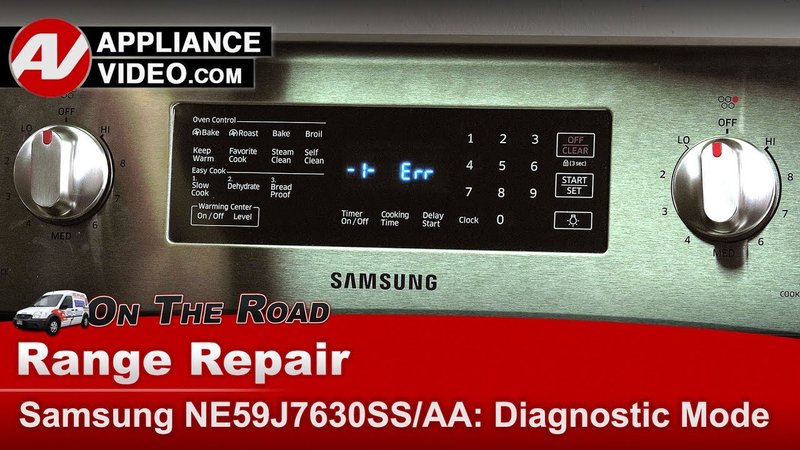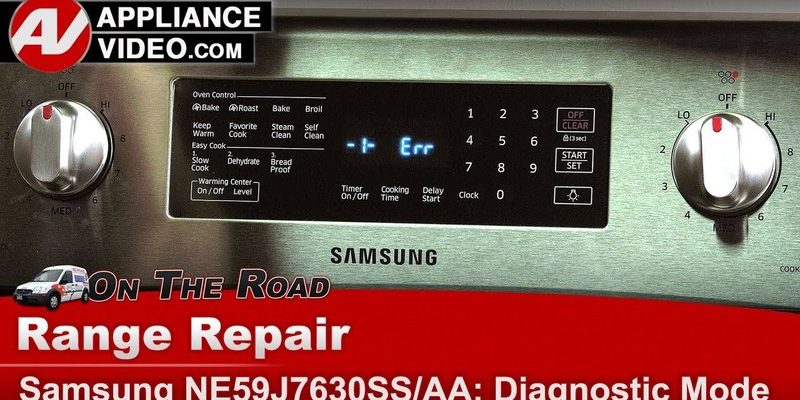
Let’s break it down: the F1 error code often signals a temperature sensor issue. Think of it like a thermostat that’s lost its mind, unsure if it’s freezing or boiling. It’s a common hiccup and can usually be fixed with a straightforward reset. But before you dash to the circuit breaker, let’s walk through why this happens and how you can solve it with ease.
Understanding the Error Code F1
When your trusty Samsung oven displays an F1 error, your appliance is trying to tell you something’s off with the temperature sensor or the oven’s internal circuitry. The temperature sensor is like the brain of your oven, measuring how hot things are inside. If it starts malfunctioning, it sends signals to the oven that are, well, just plain wrong. This can trigger an F1 message, causing the oven to act up or not heat up properly.
Why does this happen? Several factors can contribute. It might be due to wear and tear on the sensor or perhaps a glitch in the oven’s electronic control board. Imagine your oven’s sensor like an athlete’s heart monitor. If the monitor starts reading irregularly, it might indicate an issue that needs addressing. Similarly, when the sensor’s out of sync, it throws off the oven’s balance, hence that pesky F1 code.
However, don’t fret. Fortunately, you can often resolve this without needing a technician. Resetting the oven can help recalibrate the sensor and clear the error code. It’s akin to rebooting your smartphone when it freezes—sometimes, a fresh start is all it takes.
Step-by-Step Guide to Resetting Your Oven
Here’s the deal: resetting a Samsung oven is typically a simple process. First, ensure that your oven is in a safe state. Make sure it’s off and hasn’t been used recently to avoid any heat-related injuries. Safety first, always!
Next, you’ll want to unplug the oven from its power source. If you can’t easily access the plug, turn off the circuit breaker that supplies power to the oven. Think of this as giving your oven a moment to breathe—like when your computer hangs, and you perform a hard reset. By cutting off the power supply, you’re allowing the internal system to reboot and clear any existing errors.
After leaving it unplugged for about 5 to 10 minutes, plug it back in or flip the circuit breaker switch on again. This is the oven’s equivalent of a coffee break. By giving it this short rest, you’re allowing any residual electrical issues to dissipate, hopefully resulting in the error code disappearing once you power it back up.
Checking for Reoccurring Issues
Once you’ve reset the oven, it’s time to test it out. Turn your oven on and let it run for a bit, observing if the F1 code reappears. If it doesn’t, congratulations—you’ve successfully reset your oven! However, if the error persists, there might be a deeper issue at hand.
The F1 error could mean that the temperature sensor or the electronic control board needs a closer inspection. Imagine it’s like your car’s check engine light; occasionally, resetting clears the light, but other times it indicates a more substantial problem. If your oven’s still playing up, it might be time to call in a professional.
In addition to addressing immediate concerns, it’s also helpful to keep an eye on your oven’s performance regularly. This proactive approach can help prevent future issues, much like routine check-ups with a doctor.
Preventive Tips to Avoid Future Errors
To minimize the chances of encountering the F1 error code again, maintaining your Samsung oven is crucial. Regular cleaning and routine checks can go a long way in keeping it in top shape. Consider it like dental hygiene for your appliance—skipping that cleaning can lead to bigger problems down the line.
Ensure that the oven’s internal components, like the temperature sensor or the control board, are free from excessive buildup or debris. Treat it like you would a delicate piece of equipment; a little TLC (tender loving care) can extend its life significantly. Also, keeping the exterior clean can prevent any accidental spills or particles from affecting the internal sensors.
It’s also wise to consult your oven’s manual for specific maintenance tips. These guides are treasure troves of information and can often answer questions we haven’t even thought to ask. By adhering to manufacturer suggestions, you can keep your oven running smoothly and error-free.
In summary, while the F1 error might seem daunting at first, it’s usually just a minor bump in the road. By understanding the cause, following the steps to reset, and maintaining your oven regularly, you can keep the heart of your kitchen beating strong.
